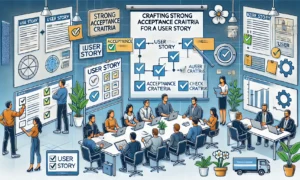User feedback is one of the most valuable resources for a Product Manager. It bridges the gap between a company’s vision and customer needs, providing the insight necessary to create meaningful, impactful products. Turning these insights into actionable changes is both an art and a science that, when done right, can lead to customer satisfaction, loyalty, and market success.
Why User Feedback Matters
1. Closes the Gap Between Assumptions and Reality
Product teams often operate on assumptions about what customers want. User feedback provides real-world validation, ensuring that development efforts align with actual needs.
2. Enhances Customer Loyalty
When customers feel heard and see their suggestions reflected in a product, they are more likely to remain loyal and advocate for your brand.
3. Identifies Opportunities for Innovation
Feedback can uncover unmet needs, inefficiencies, or pain points, opening doors for new features or entirely new products.
How to Gather Meaningful User Feedback
- Surveys and Questionnaires
- Use tools like Google Forms or Typeform to collect structured feedback.
- Focus on open-ended questions to uncover insights beyond predefined options.
- User Interviews
- Dive deeper into user experiences through one-on-one conversations.
- Ask about pain points, expectations, and ideas for improvement.
- Analytics and Behavior Tracking
- Analyze user behavior on your platform to complement qualitative feedback.
- Tools like Google Analytics or Mixpanel can reveal usage patterns and drop-off points.
- Social Listening
- Monitor social media channels and forums for unfiltered opinions.
- Engage with customers to clarify feedback and show responsiveness.
- Beta Testing Programs
- Allow select users to test new features before launch.
- Gather detailed feedback to refine the product further.
Turning Feedback into Actionable Changes
- Prioritize Feedback
- Not all feedback is equally impactful. Use frameworks like RICE (Reach, Impact, Confidence, Effort) to determine what to address first.
- Collaborate Across Teams
- Share insights with design, engineering, and marketing teams to align efforts.
- Prototype and Test Iteratively
- Develop prototypes to test potential changes before full-scale implementation.
- Use A/B testing to validate the effectiveness of updates.
- Close the Loop with Customers
- Inform users when their feedback leads to changes. This builds trust and strengthens relationships.
Case in Point: Leveraging Feedback for Success
A popular streaming service once struggled with user retention due to its complex interface. By conducting user interviews, they learned customers wanted simpler navigation and better content recommendations. The team prioritized redesigning the UI and enhancing their recommendation algorithm. Within six months of implementing the changes, customer satisfaction and retention rates improved significantly.
The Future of Feedback-Driven Product Management
In a world driven by data and personalization, feedback will play an even bigger role in shaping products. Advanced technologies like AI and machine learning will allow companies to analyze feedback more efficiently and provide hyper-personalized solutions.
Conclusion
User feedback is not just a checkbox in the product development process—it’s the foundation of customer-centric innovation. By actively listening to customers and turning their insights into actionable changes, businesses can create products that resonate deeply, ensuring long-term success in a competitive market.
Disclaimer
Posts in the Notebook are written by individual members and reflect personal insights or opinions. Please verify any information independently. If you have any concerns, notify the admin immediately so we can take action before any legal steps are taken.





